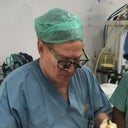I'm 23 days post-op from a TT. Had my drains removed on day 8 post op. They averaged less than 27 cc' s total in two 24 hour periods prior to removal. I started noticing a lot of swelling above the incision a few days ago. Had an appt with my surgeon today and he treated with serial aspiration removing about 110 cc's of fluid. My questions are (1) any theories as to why I formed a seroma and (2) what can I do to prevent It from returning? Thanks for your guidance!
Answers (5)
From board-certified doctors and trusted medical professionals
Dr. Larry Weinstein, MD

Dr. Larry Weinstein, MD
Board Certified Plastic Surgeon
Answer
Dr. Jose M. Soler-Baillo, MD, MS

Dr. Jose M. Soler-Baillo, MD, MS
Board Certified Plastic Surgeon
Answer
Dr. Farbod Esmailian, MD

Dr. Farbod Esmailian, MD
Board Certified Plastic Surgeon
Answer
Dr. Mytien Goldberg, MD, FACS
Dr. Mytien Goldberg, MD, FACS
Board Certified Plastic Surgeon
Answer
More Tummy Tuck Questions
See all Tummy Tuck Q&AWE SEND PRETTY
EMAILS
What’s trending? Who’s turning heads? Which TikTok myths need busting? We’ve got you. No fluff, no gatekeeping—just real talk. Get our free, unfiltered newsletter.